Opinion
Education,ASUU And The Globalist Agenda (I)
Opinion
Matawalle: The Northern Anchor of Loyalty in Tinubu’s Administration
By Adebayor Adetunji, PhD
In the broad and competitive terrain of Nigerian politics, loyalty is often spoken of, yet rarely sustained with consistency, courage and visible action. But within the administration of President Bola Ahmed Tinubu, one Northern appointee has demonstrated this quality not as a slogan, but as a lifestyle, as a political principle and as a national duty — Hon. (Dr.) Bello Muhammad Matawalle, Minister of State for Defence.
Since his appointment, Matawalle has stood out as one of the most loyal, outspoken and dependable pillars of support for the Tinubu administration in the North. He has never hesitated, not for a moment, to stand firmly behind the President. At every turn of controversy, in moments of public misunderstanding, and at times when political alliances waver, Matawalle has continued to speak boldly in defence of the government he serves. For him, loyalty is not an occasional gesture — it is a commitment evidenced through voice, alignment, and sacrifice.
Observers within and outside the ruling party recall numerous occasions where the former Zamfara State Governor took the front line in defending the government’s policies, actions and direction, even when others chose neutrality or silence. His interventions, always direct and clear, reflect not just loyalty to a leader, but faith in the future the President is building, a future anchored on economic reform, security revival, institutional strengthening and renewed national unity.
But Matawalle’s value to the administration does not stop at loyalty. In performance, visibility and active delivery of duty, he stands among the most engaged ministers currently serving in the federal cabinet. His portfolio, centred on defence and security, one of the most sensitive sectors in the country, demands expertise, availability and unbroken presence. Matawalle has not only embraced this responsibility, he has carried it with remarkable energy.
From high-level security meetings within Nigeria to strategic engagements across foreign capitals, Matawalle has represented the nation with clarity and confidence. His participation in defence summits, international cooperation talks, and regional security collaborations has positioned Nigeria as a voice of influence in global security discourse once again. At home, his involvement in military policy evaluation, counter-terrorism discussions and national defence restructuring reflects a minister who understands the urgency of Nigeria’s security needs, and shows up to work daily to address them.
Away from partisan battles, Matawalle has proven to be a bridge — between North and South, civilian leadership and military institutions, Nigeria and the wider world. His presence in government offers a mix of loyalty, performance and deep grounding in national interest, the type of partnership every President needs in turbulent times.
This is why calls, campaigns and whisperings aimed at undermining or isolating him must be resisted. Nigeria cannot afford to discourage its best-performing public servants, nor tighten the atmosphere for those who stand firmly for unity and national progress. The nation must learn to applaud where there is performance, support where there is loyalty, and encourage where there is commitment.
Hon. Bello Matawalle deserves commendation, not suspicion. Support — not sabotage. Encouragement, not exclusion from political strategy or power alignment due to narrow interests.
History does not forget those who stood when it mattered. Matawalle stands today for President Tinubu, for security, for loyalty, for national service. And in that place, he has earned a space not only in the present political equation, but in the future judgment of posterity.
Nigeria needs more leaders like him. And Nigeria must say so openly.
Adebayor Adetunji, PhD
A communication strategist and public commentator
Write from Akure, Ondo State, Nigeria
Opinion
Drug Abuse Among People With Disabilities: The Hidden Crisis Nigeria Is Yet to Address
By Abdulaziz Ibrahim
Statistically Invisible, Persons with Disabilities feel shut out of Nigeria’s drug abuse war as a report from Adamawa reveals lacks data and tailored support needed, forcing a vulnerable group to battle addiction alone.
In Adamawa State, the fight against drug abuse is gaining attention, but for many people living with disabilities (PWDs), their struggles remain largely unseen. A new report has uncovered deep gaps in support, treatment, and data tracking for PWDs battling addiction despite official claims of equal access.
For nearly three decades, Mallam Aliyu Hammawa, a visually impaired resident of Yola, navigated a world increasingly shrouded by drug dependency. He first encountered psychoactive substances through friends, and what began as casual use quickly escalated into long-term addiction.
“I used cannabis, tramadol, tablets, shooters everything I could get my hands on,” he recalled. “These drugs affected my behaviour and my relationship with the people close to me.”
Family members say his addiction changed him entirely. His friend, Hussaini Usman, described feeling “sad and worried” when he realized Aliyu had fallen into drug use.
Aliyu eventually made the decision to quit. It was marriage and the fear of hurting his wife that finally forced him to seek a new path. “Whenever I took the drugs, I felt normal. But my wife was confused about my behaviour,” he said. “I decided I had to stop before she discovered the full truth of what I was taking.”
A National Problem With Missing Data
Nigeria has one of the highest drug-use rates in West Africa, according to the United Nations Office on Drugs and Crime (UNODC). Over 14 million Nigerians between the ages of 15 and 64 use psychoactive substances. Yet, within that massive user base, PWDs are statistically invisible.
There is almost no national data on drug abuse among persons with disabilitiesa critical gap that experts warn makes it impossible to design effective, inclusive rehabilitation programmes.
Ibrahim Idris Kochifa, the Secretary of the Adamawa State Association of Persons with Physical Disability, told this reporter that PWDs face unique, systemic pressures that intensify their vulnerability to drug abuse, specifically citing poverty, unemployment, isolation, and social discrimination.
“Whenever a person with disability is caught with drugs, the common decision is to seize the drugs and let him go,” Kochifa said, speaking on behalf of the disabled community leadership. “But if they consult us, we have advice to offer on how they can be treated and rehabilitated. Without involving us, no programme will fully benefit people with disabilities.”
NDLEA Responds
At the National Drug Law Enforcement Agency (NDLEA) Command in Adamawa, officials insist their services are open to everyone without discrimination.
Mrs. Ibraham Nachafia, the Head of Media and Advocacy for the NDLEA Adamawa State Command, said during an interview, “Our rehabilitation centre is open to all. There is no discrimination. Anyone including persons with disabilities can access treatment.”
While the official position suggests inclusiveness, disability advocates call it “tokenistic.” They argue that equal access on paper does not translate to tailored support in practice. True rehabilitation for PWDs requires specialized counselling that understands their unique traumas, physically accessible facilities, and significantly stronger community engagement to prevent relapse.
A Call for More Inclusive Action
Advocates are now urging the Nigerian government and drug-control agencies to build a response framework that recognizes PWDs as a vulnerable group in need of targeted support.
The advocate Goodness Fedrick warns that until rehabilitation and prevention programmes reflect the realities faced by people with disabilities, Nigeria’s battle against drug abuse will remain incomplete.
For people like Aliyu Hammawa, who managed to recover without structured support, the message is clear: many others may not be as fortunate.
This story highlights the urgent need for inclusive, data-driven, and community-supported approaches in Nigeria’s fight against drug addiction. Until the nation sees and serves this ‘hidden crisis,’ its overall battle against addiction will continue to be fought with one hand tied behind its back.
Opinion
Debunking the Myth of Christian Genocide in Nigeria: Unmasking America’s Militarism and Invasion Tactics
By Sani Khamees
In 2017, while serving in Kano through the National Youth Service Corps (NYSC) scheme in Nigeria, I crossed paths once more with Professor Horace Campbell. An invitation arrived at the department of Political Science, Aminu Kano College of Islamic and Legal Studies, summoning us to hear Campbell speak on his latest book, ‘Global NATO and Catastrophic Failure in Libya: Lessons for Africa in the forging of African unity.’ I shared with my HOD that I had first met Campbell in 2010, during his condolence visit for the late Dr Tajudeen Abdulraheem, my former school director in Funtua. My HOD eagerly accepted, and we prepared for the evening. After introducing myself to Campbell, he handed me his book and asked for a summary. His work reveals how Western powers, under the banner of NATO, used the UN Security Council’s Resolution 1973 and the so-called ‘responsibility to protect’ as a pretext to invade and devastate Libya (Campbell,2013).
The Libyan uprisings emerged from the Arab Spring, which began in Tunisia in 2010 and spread across Egypt, Yemen, Syria, Bahrain, and finally Libya. After Tunisia’s Bin Ali fled and Egypt’s Mubarak was toppled by a tidal wave of revolution, Benghazi erupted in rebellion just days later. But the West soon intervened, transforming a popular movement into an armed struggle. In response, Gaddafi threatened to unleash the full force of the state to crush the discord.
By February 21, 2011, Western media had rewritten the story, claiming that innocent civilians faced imminent massacre by the Libyan army. Headlines like “Gaddafi Warns of ‘Rivers of Blood’ as UN Prepares to Vote” from The Guardian and reports from CNN suggesting the urgent need for intervention due to potential atrocities influenced public perception. The United States, Britain, and France seized the moment, pushing a UN Security Council resolution under the guise of ‘responsibility to protect.’ This cleared their path into Libya, leading to Gaddafi’s death and the takeover of the nation’s political and economic future.
In the aftermath of Libya’s collapse, chaos swept across the Sahel as militias like Boko Haram, Jama’at Nusrat ul-Islam wa al-Muslimin (JIMIM), Islamic State in the Greater Sahara (ISGS), Islamic State – West Africa Province (ISWAP), Bandits, and Ansaru surged back into prominence. The collapse led to a vacuum of power and increased availability of weapons when Gaddafi’s vast armory was looted and diffused across the region. These armaments and the instability spurred by Libya’s breakdown facilitated the resurgence and strengthening of militant groups in surrounding areas, including Nigeria. In Nigeria, Boko Haram in the Northeast and Bandits in the Northwest became household names, operating mainly in the country’s northern regions. Boko Haram launched its campaign in Borno State with the rallying cry ‘no to western education’, then spread to Yobe, Gombe, Bauchi, and even Kano, areas with deep Muslim roots. Their reign of terror included bombings of worship centers, hospitals, markets, and busy roads, as well as kidnappings for forced marriage, abuse, and other social vices.
Rivaling Boko Haram in brutality are the armed bandits who first emerged in Zamfara State and quickly spread to Sokoto, Kebbi, Niger, and Katsina, now encroaching on the north-central states of Plateau, Benue, and Kwara. Unlike Boko Haram, these bandits are driven by profit, engaging in kidnappings for ransom, assaults on villages and towns, and the deliberate killing of civilians.
Both Boko Haram and the armed bandits have left a trail of devastation: thousands of civilians killed, worship centers and farmlands destroyed, and entire villages emptied as people flee for safety. Their violence knows no boundaries of religion, tribe, or ethnicity. Boko Haram has bombed mosques, including the Kano city mosque near the Emir’s palace, killing over 120 and injuring around 200. (wikipedia, 2014) Bandits have kidnapped thousands and indiscriminately attacked travelers and villagers. Their latest atrocity saw worshippers in Mantau village, Malumfashi, gunned down during dawn prayers.
It is a fact that most terror attacks in Nigeria occur in the Muslim-majority north. While these groups show no regard for religion or ethnicity, it is the Muslim population that suffers most, simply because they are the majority. However, the narrative of a targeted genocide against Christians fails to hold when we incorporate the experiences of both Muslim and Christian communities in the north. According to a report by the International Crisis Group, the majority of attacks and incidents of violence between 2010 and 2019 occurred in northern regions, with Muslim communities being disproportionately affected. Studies also suggest that around 8 out of 10 victims of Boko Haram’s attacks are Muslims (Group, 2010). Testimonies from these communities reveal a shared struggle against violence and a mutual rejection of divisive labels imposed from outside. A Muslim community leader from Maiduguri described a neighborhood where Christians and Muslims live side by side, united in their fear and condemnation of extremist violence. Similarly, a Christian resident of Kaduna expressed that they view their Muslim neighbors as partners in resilience rather than adversaries. Such perspectives challenge simplistic genocide narratives and highlight how local identities and solidarities complicate the external binary framing of conflict in Nigeria.
Echoing the tactics used to justify intervention in Libya, a recent claim by American politician Bill Maher alleges that Christians in Nigeria are being targeted for genocide. He asserts that Islamists have killed over 100,000 Christians and destroyed 18,000 churches, painting a picture of a systematic campaign to erase Christianity from Nigeria. These claims are fabrications, designed to set the stage for another ‘responsibility to protect’ intervention. Nigeria’s wealth in natural resources and oil has long made it a target for Western interests.
It is clear that the US seeks to repeat the Libyan scenario in Nigeria. Western media excels at crafting divisive narratives that pave the way for imperial ambitions. This pattern is not new. Samir Amin, in ‘The Liberal Virus: Permanent War and the Americanization of the World,’ describes how Hitler used the Reichstag fire as a ploy for repression, drawing parallels to George Bush’s invasion of Iraq and NATO’s intervention in Libya (Amin, 2004). Now, the same playbook is being opened for Nigeria.
However, it is crucial to recognize the active role Nigerian actors, both in person and groups, play in countering these narratives and steering their own destiny. The Nigerian government has engaged in diplomatic dialogues and sought the support of international bodies to challenge misleading accounts and protect the country’s sovereignty.
Additionally, vibrant civil society organizations in Nigeria work tirelessly to foster inter-communal dialogue and resist attempts to sow discord. Nigerian media outlets, both traditional and digital, have amplified local voices and stories that underline a unified resistance against manipulative foreign interests. These efforts highlight Nigeria’s agency in shaping its future and resisting external exploitation.
Sani Khamees is a community activist and Pan-Africanist from Funtua, Katsina state of Nigeria.
Facebook: SaniKhamees@facebook.com
Twitter (X): @Khamees _sa54571
References
Campbell, H (2013). Global NATO and Catastrophic Failure in Libya: Lessons for Africa in the forging of African unity. New York, Monthly Review Press
Amin, S. (2004). The Liberal Virus: Permanent War and the Americanization of the World. Monthly Review Press. https://nyupress.org/9781583671078/the-liberal-virus/
(2014). 2014 Kano attack. https://en.wikipedia.org/wiki/2014_Kano_attack
Group, I. C. (2010). Northern Nigeria: Background to Conflict. International Crisis Group. https://ciaotest.cc.columbia.edu/wps/icg/0020843/index.html
Amin, S. (2004). The Liberal Virus: Permanent War and the Americanization of the World. Monthly Review Press. https://nyupress.org/9781583671078/the-liberal-virus/
(2020). 90% of Boko Haram’s victims are Muslims — Buhari. https://www.vanguardngr.com/2020/02/90-of-boko-harams-victims-are-muslims-buhari/
-

 Opinion4 years ago
Opinion4 years agoOn The Kano Flyovers And Public Perception
-

 Features4 years ago
Features4 years agoHow I Became A Multimillionaire In Nigeria – Hadiza Gabon
-
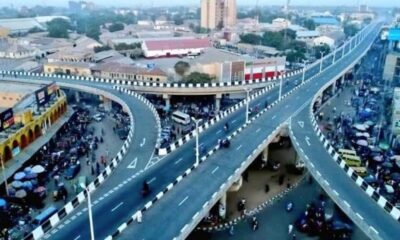
 Opinion5 years ago
Opinion5 years agoKano As future Headquarters Of Poverty In Nigeria
-
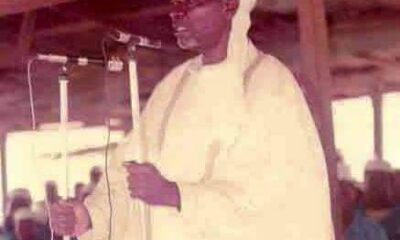
 History5 years ago
History5 years agoSheikh Adam Abdullahi Al-Ilory (1917-1992):Nigeria’s Islamic Scholar Who Wrote Over 100 Books And Journals
-
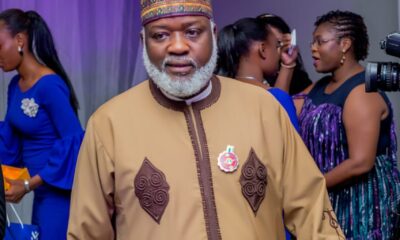
 Opinion4 years ago
Opinion4 years agoMy First Encounter with Nasiru Gawuna, the Humble Deputy Governor
-
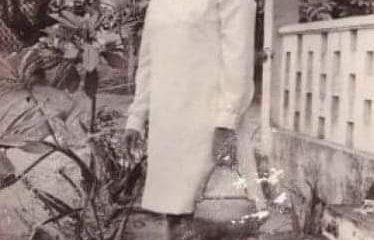
 History5 years ago
History5 years agoThe Origin Of “Mammy Market” In Army Barracks (Mammy Ochefu)
-
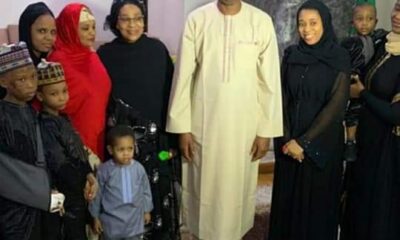
 History4 years ago
History4 years agoThe History Of Borno State Governor Professor Babagana Umara Zulum
-
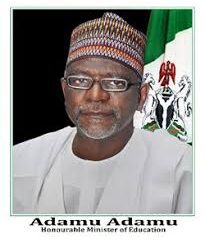
 News4 years ago
News4 years agoFederal University Of Technology Babura To Commence Academic Activities September